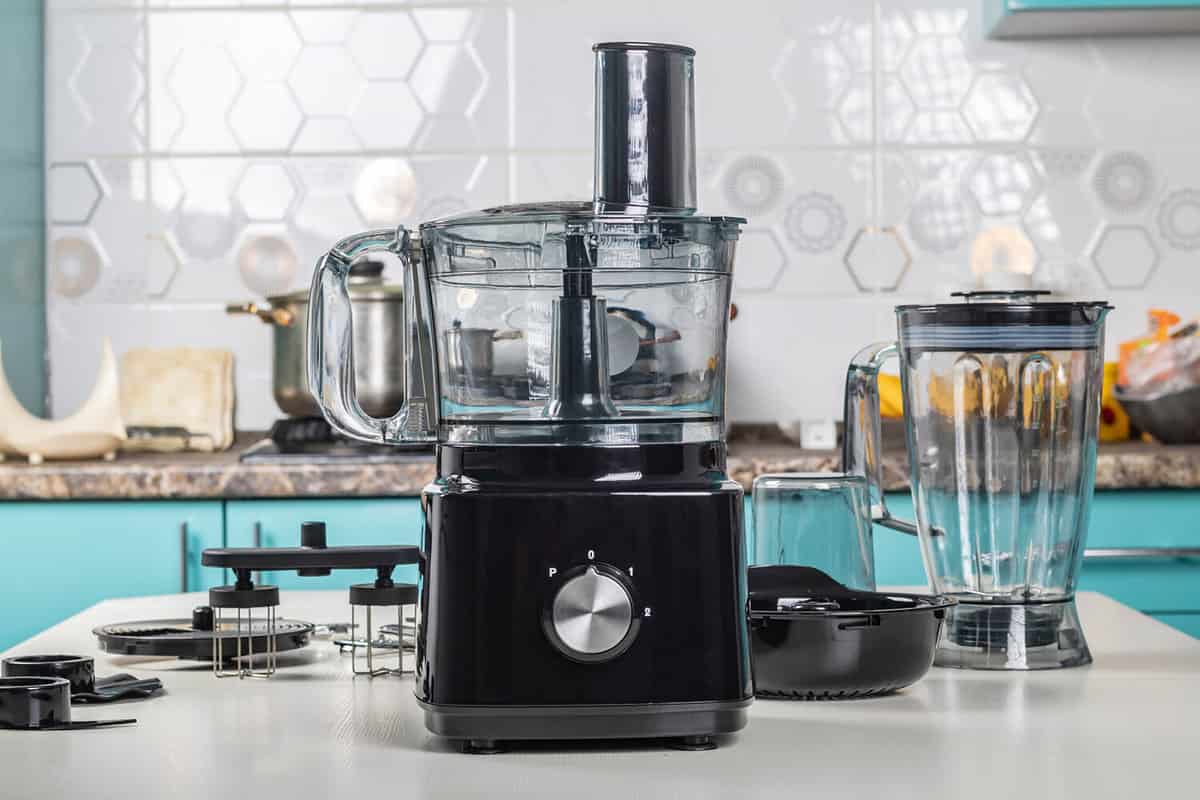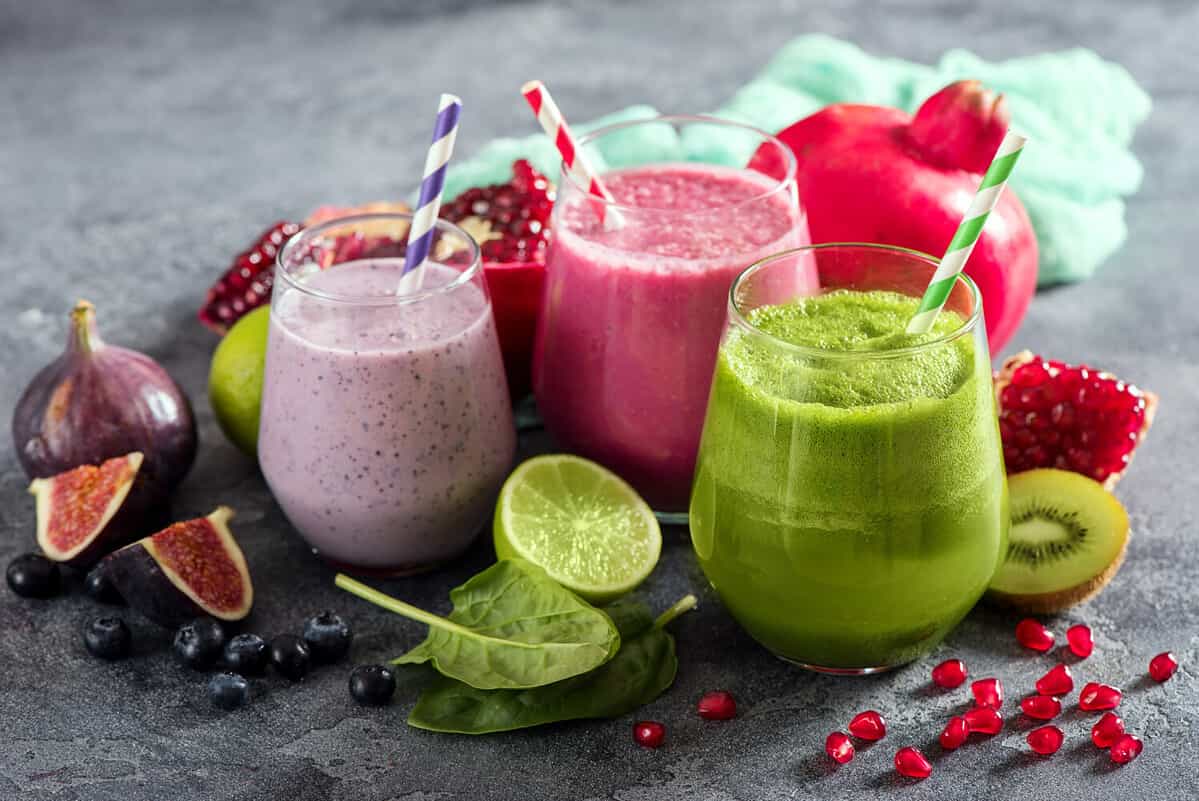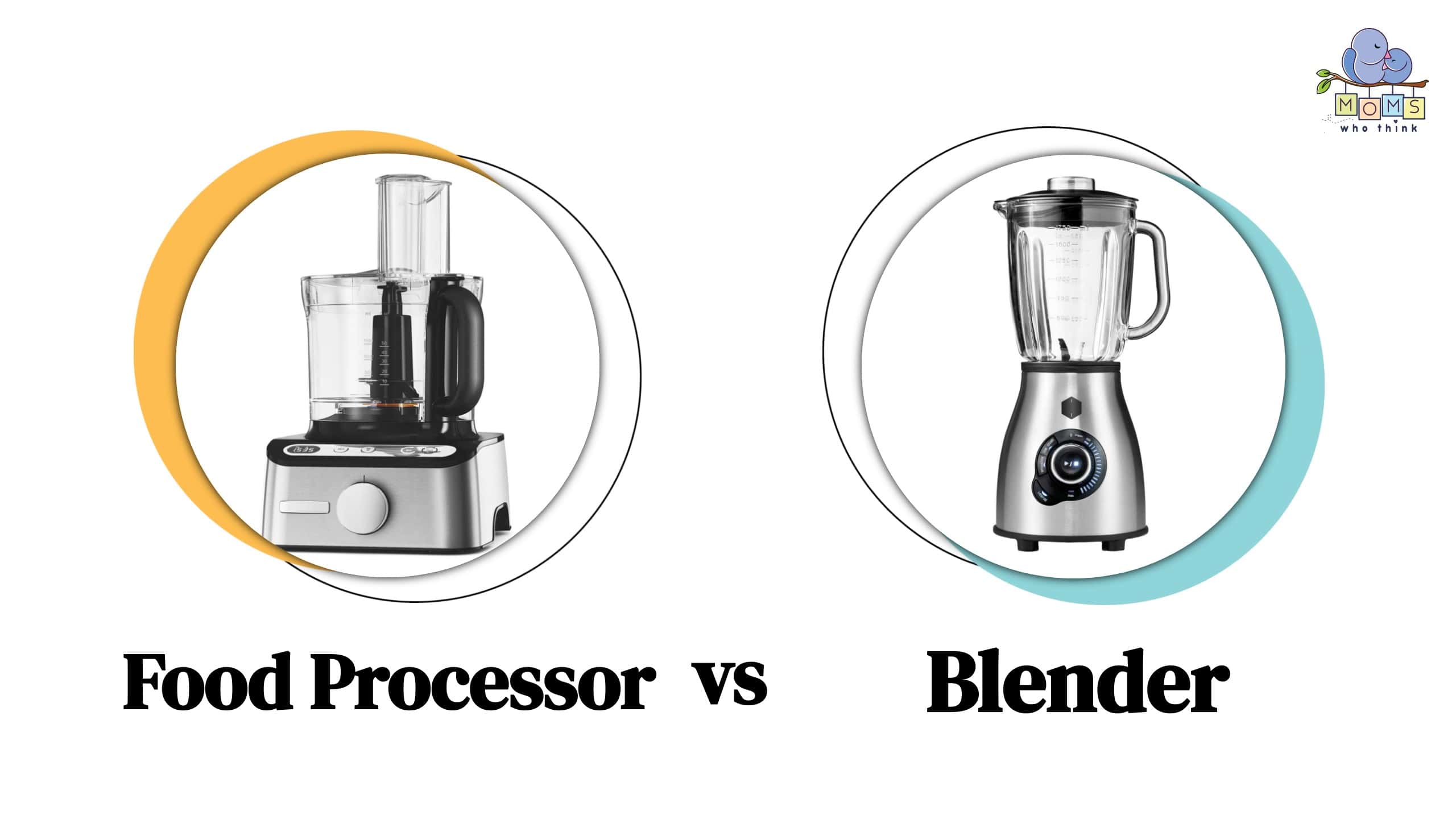Food processors and blenders are two of the most common kitchen tools. If you stumble across a recipe that requires a food processor, you might wonder whether you can use a blender instead. While these two kitchen tools do have some things in common, they have more differences than similarities.
The main difference between a food processor and blender is the blades and the included container. While most standard blenders have a fixed blade, food processors have multiple blades and often come with several options you can switch out. Additionally, the container for a blender is a tall, leak-proof jar designed for liquids while a food processor has a wider and larger bowl for solid ingredients.
Even though the purpose of a food processor and a blender can sometimes overlap, they mainly have different uses in the kitchen. Keep reading to find out more about the difference between a food processor vs. blender.

©Siarhei Kuranets/Shutterstock.com
Food Processor vs Blender: What Is the Difference?
If you’re looking at a recipe that asks you to blend or process something and you’re not quite sure which kitchen tool to use, you might consider the difference between a food processor and blender. It’s not uncommon to have both tools in the kitchen since they have different functions. However, if you don’t have access to both, you might wonder if you can use these tools interchangeably.
While there are numerous differences between a food processor and blender, the main difference between them is the type of blade as well as the size and shape of the container. The actual structure of a blender can vary depending on the type and brand, but most blenders have a fixed blade that can’t be removed.
Blenders are traditionally designed for crushing ice or blending liquids while food processors are designed for finely chopping or processing foods. While both tools are great for a wide range of tasks in the kitchen, they don’t function the same way. Food processors, unlike most blenders, often come with a removable blade and may even include multiple blades or discs for different types of ingredients.
A good rule of thumb is that you put wet ingredients or liquids in a blender and you put dry ingredients in a food processor. You can use the blender to make a smoothie or puree a soup. You can use a food processor to make oat flour or dough.
There are some similarities between food processors and blenders as well, but the functions will depend on the brand of blender or processor you have.
What Is a Food Processor?
For anyone who frequently cooks or bakes at home, a food processor is a valuable tool to have on hand. Whether you’re trying to make your own oat flour, breadcrumbs, or dough, a food processor can chop, slice, and process a number of ingredients. It’s probably one of the most valuable kitchen tools for those who consistently make meals from scratch.
Not only can you use a food processor to create spreads such as hummus or pesto, but you can also use it to easily chop or dice vegetables. Most food processors come with a multi-purpose blade and some even come with different types of blades or discs.
Parts of a Food Processor
What your food processor comes with will depend on the brand and type of processor, but here are some of the common blades and discs:
- Multi-purpose blade
The multi-purpose blade is the one you’ll use most often on your food processor. This blade, also known as a s-blade or chopping blade, is perfect for chopping, dicing, or mixing ingredients. If your food processor doesn’t come with multiple discs or blades, this is likely the one blade it will include. - Dough blade
The dough blade is another common blade that comes with many food processors. This blade looks similar to the multi-purpose blade except that it’s plastic. Unlike the s-blade, it doesn’t have sharp edges. You can use this blade to mix dough instead of using it for chopping or dicing. - Slicing/shredding disc
If your food processor comes with a shredder disc, this is a reversible disc made for shredding and slicing vegetables. You can choose one side or the other depending on what you’re using it for. It works great for cutting your vegetables into smaller pieces or shredding cabbage to make coleslaw.
There are many varieties of food processors, but most will have some kind of hole in the lid that you can pour liquids through. Some models will have a feed tube as well as a plunger so you can add ingredients while you’re processing.
When to Use a Food Processor
While food processors and blenders are both useful kitchen tools, they serve different purposes in the kitchen. A food processor is great for when you want to chop vegetables, puree dry ingredients, or make dough.
Unlike a blender, a food processor is designed for dry ingredients instead of liquids. It’s a simple way to chop your favorite vegetables or process ingredients.
You can use a food processor to:
- Make dough for pizza or pie crust
- Chop or dice vegetables
- Make a dip, spread, or other puree like hummus or pesto
You can even use a food processor to make your own flour or cauliflower rice. There are no limits to the ways you can use a food processor in the kitchen.
What Is a Blender?
A blender is another popular kitchen tool and it’s commonly used for making smoothies, milkshakes, or other frozen drinks. While a blender does have some things in common with a food processor, the main difference is the blade. Blenders typically come with a fixed blade made of stainless steel. The blender bottom is leak-proof due to a seal ring made of rubber that sits in the bottom of the blender bowl.
There are many different types of blenders out there and the brand you choose will directly impact the quality. While some inexpensive blenders struggle to even crush ice in a smoothie, high-quality blenders can liquify fruits, vegetables, and other ingredients.
While a food processor is designed for dry ingredients, a blender is leak-proof so you can blend liquids without any liquid leaking out. Many blenders also have a hole in the lid so you can add more liquid if necessary without taking the lid off. This helps to prevent any spills or splattering during the blending process.

©Alexandra Anschiz/Shutterstock.com
When to Use a Blender
Blenders are certainly helpful tools to have on hand in the kitchen. Whether you’re a fan of smoothies, milkshakes, or even homemade daiquiris, there are plenty of fun things to make with a high-quality blender.
However, you can use a high-powered blender for more than smoothies. While blenders are great for making frozen drinks, you can use a high-quality blender for numerous recipes. Blenders can be used to make:
- Smoothies and other frozen drinks
- Batter for pancakes or waffles
- Soup
- Pizza sauce
- Salad dressing
- Salsa and other dips
Also, a high-powered blender can be a great substitute for a juicer. While a juicer can be an effective way to make nutritious juice, it also spits out the pulp, which is where a lot of the fiber is. Juicers can also be difficult to clean.
Instead, you can use a high-powered blender to make a smoothie with any fruits or vegetables you choose. You add avocado, spinach, or other vegetables and a good blender will liquify these ingredients so you don’t miss any of the nutrients.
Can You Use a Blender Instead of a Food Processor?
If you only have a food processor or blender in the kitchen, you might wonder whether you can use one in place of the other. While they can both be beneficial kitchen tools, not everyone has access to both.
The reality is, a food processor can be used instead of a blender and vice versa in some cases, but not all. While you might be able to chop vegetables in a blender if you’re in a pinch, food processors aren’t leak proof like blenders are.
All in all, food processors aren’t made for liquids or ice and blenders aren’t made for slicing, shredding, and chopping. It’s best to use these tools the way they’re designed to avoid damaging the blades or other parts of these tools.
Choosing Between a Food Processor vs Blender
There are many differences between a food processor and blender. While they can be used interchangeably in some cases, they mostly have different uses. When in doubt, remember a blender should be used for liquids such as smoothies or soups. A food processor, on the other hand, should be used for solids such as pizza dough or vegetables.
If you’re ready to add both kitchen tools to your collection, there are some sets you can purchase that fulfill both needs. Kitchen sets like the Ninja Professional Kitchen System come with a blender, food processor, and two smoothie cups to make individual servings. No matter what you need them for, a blender and food processor are valuable kitchen tools to have in your home.

